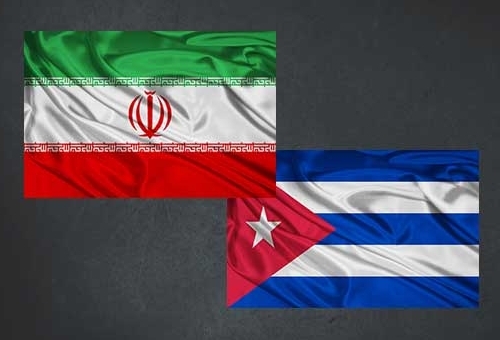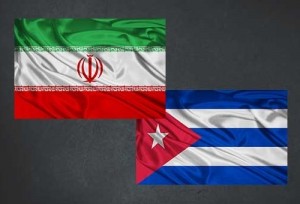In 2013, Obama declared: I extend my best wishes to His Highness Sheikh Tamim bin Hamad Al Thani as he assumes his new role as the Amir of Qatar. Qatar is an important partner of the United States, and we look forward to further strengthening our cooperation in the years ahead. I also extend my appreciation to His Highness Sheikh Hamad bin Khalifa Al Thani for his friendship and leadership. The United States looks forward to working with Sheikh Tamim to deepen the ties between our two countries, and to continue our close partnership on issues of mutual interest.
The Taliban 5 were released to Qatar who are free to move about the country. Qatar funds Hamas.
In part from the Washington Institute:
When Emir Tamim bin Hamad al-Thani visits the White House on February 24, President Obama will have to contend with a Qatari diplomatic scorecard that has significant marks on both sides of the ledger. Given its historically awkward relations with neighboring Saudi Arabia and its shared ownership with Iran of the world’s largest offshore natural gas field, Qatar looks to the United States as its main security guarantor. That has suited the U.S. military, which has used the giant al-Udeid Air Base outside Doha for operations over Iraq and Afghanistan. But Qatar, with a population of around two million, of which only some 10 percent are citizens, has an often quirky tendency to demonstrate its independence. Past sins include parading Stinger missiles illegally acquired from Afghanistan mujahedin, allowing its Aljazeera satellite television channel to broadcast inflammatory and false reports that led to American deaths, and financing terrorism.
Indeed, as deputy CIA chief David Cohen told a Washington audience last March while serving as the Treasury Department’s undersecretary for terrorism and financial intelligence, “Distressingly, Iran is not the only state that provides financial support for terrorist organizations. Most notably, Qatar, a longtime U.S. ally, has for many years openly financed Hamas, a group that continues to undermine regional stability. Press reports indicate that the Qatari government is also supporting extremist groups operating in Syria. To say the least, this threatens to aggravate an already volatile situation in a particularly dangerous and unwelcome manner.”
Okay, it is really festering in Qatar with terrorism. So the National Security Council, the White House, the State Department and the United Nations are cool with this?
 |
|
David Andrew Weinberg
1 July 2015 – Business Insider
The ruler of Qatar, Emir Tamim bin Hamad Al Thani, hosted a gaggle of religious leaders at his palace in Doha to break the Ramadan fast on Tuesday of last week.
The emir physically embraced and accorded seats of honor to some of the most hateful clerics in the Gulf, religious leaders who together have a long record of intolerance toward women, Christians, Shiites, and Jews.
Footage from the event showed Tamim kissing the head of iconic Muslim Brotherhood ideologue Yusuf al-Qaradawi, who was seated even closer to the ruler than his ministers or brother, the deputy emir.
Qaradawi notoriously asked God in a 2009 sermon broadcast on Qatar’s Al Jazeera network to “take the Jews, the treacherous aggressors” and to “count their numbers, and kill them, down to the very last one.”
He has also chaired a network of charities called the Union of Good that is under US terror finance sanctions on charges of being a front for Hamas. Qaradawi then bragged that he himself had avoided being sanctioned because Tamim’s father, the previous emir, stood up on his behalf.
Qaradawi has ceased giving televised sermons in the country. This was reportedly one of Qatar’s concessions last year to end a diplomatic breach with its Gulf neighbors, a standoff exacerbated by the cleric’s condemnation of those countries’ anti-Brotherhood policies. Yet Qaradawi’s peck from the prince suggests that the hardline preacher still continues to have access to Qatar’s ruling circle.
Qatar’s ruler also embraced a trio of Saudi preachers who were profiled in a March report on Saudi incitement and human rights abuses that I helped write for the nonprofit group Human Rights First. Mohammed al-Arifi, Aidh al-Qarni, and Nasser al-Omar have a combined 23 million followers on Twitter, in part because of the tolerance or support they receive from Gulf rulers.
Al-Arifi was recorded last Tuesday exchanging kisses with Tamim and speaking into his ear. Also last week, Qatar’s Ministry of Islamic Affairs and Endowments announced it was “delighted to invite” guests to several events featuring Arifi at Qatar’s massive state-controlled Grand Mosque.
Yet Mohammed al-Arifi has been accused of describing Shiites as “non-believers who must be killed,” and of decrying them for “treachery” and “evil.”
The Middle East Media Research Institute says he has also proclaimed “one’s devotion to jihad for the sake of Allah and one’s will to shed blood, smash skulls, and chop off body parts … constitute an honor for the believer.” On Al Jazeera he called Osama bin Laden a “sheikh” and insisted members of Al Qaeda “do not tolerate bloodshed.” According to Saudi women’s rights activist Eman al-Nafjan, Arifi has also delivered guidance on how to beat one’s wife.
Another Saudi preacher who exchanged kisses with Tamim that same evening was Aidh Abdullah al-Qarni, who was visiting the country to deliver several lectures for Ramadan. Qarni has previously stated that when Jews and Christians claim God loves them, “they are lying, Allah’s wrath upon them.” He also has hailed fighters of the US-designated Foreign Terrorist Organization Hamas as holy warriors, and maligned Jews as “the brothers of apes and pigs.”
Finally, Saudi preacher Nasser al-Omar was also photographed holding hands with a grinning Tamim and sitting next to Qatar’s Minister for Islamic Affairs and Endowments.
According to CNN Arabic, al-Omar once sought a meeting with the Saudi king to warn against “the danger” of granting women the right to drive, which the preacher warned would “open the door of evil.” He also allegedly signed a petition in 2008 that called the “Shi[ite] sect an evil among the sects of the Islamic nation, and the greatest enemy and deceivers of the Sunni people.”
On his website, al-Omar endorsed the Islamic Front in Syria in 2013, even though one of the group’s leaders had already advocated ethnic cleansing of Shiites and Alawites, and its members had possibly participated in the summary execution of Alawite villagers.
Raising further questions about the Qatari government’s views and priorities, on June 28th the country’s prime minister graced with his presence a lecture by another Saudi cleric, Salman al-Oudah, who has suggested that Jews eat human blood in their Passover matzah.
On the most recent anniversary of the 9/11 attacks, Qatar agreed to participate in a coalition against the Islamic State, specifically pledging to repudiate the group’s hateful ideology.
Perhaps it is time for Washington to remind Qatar of its commitment.


